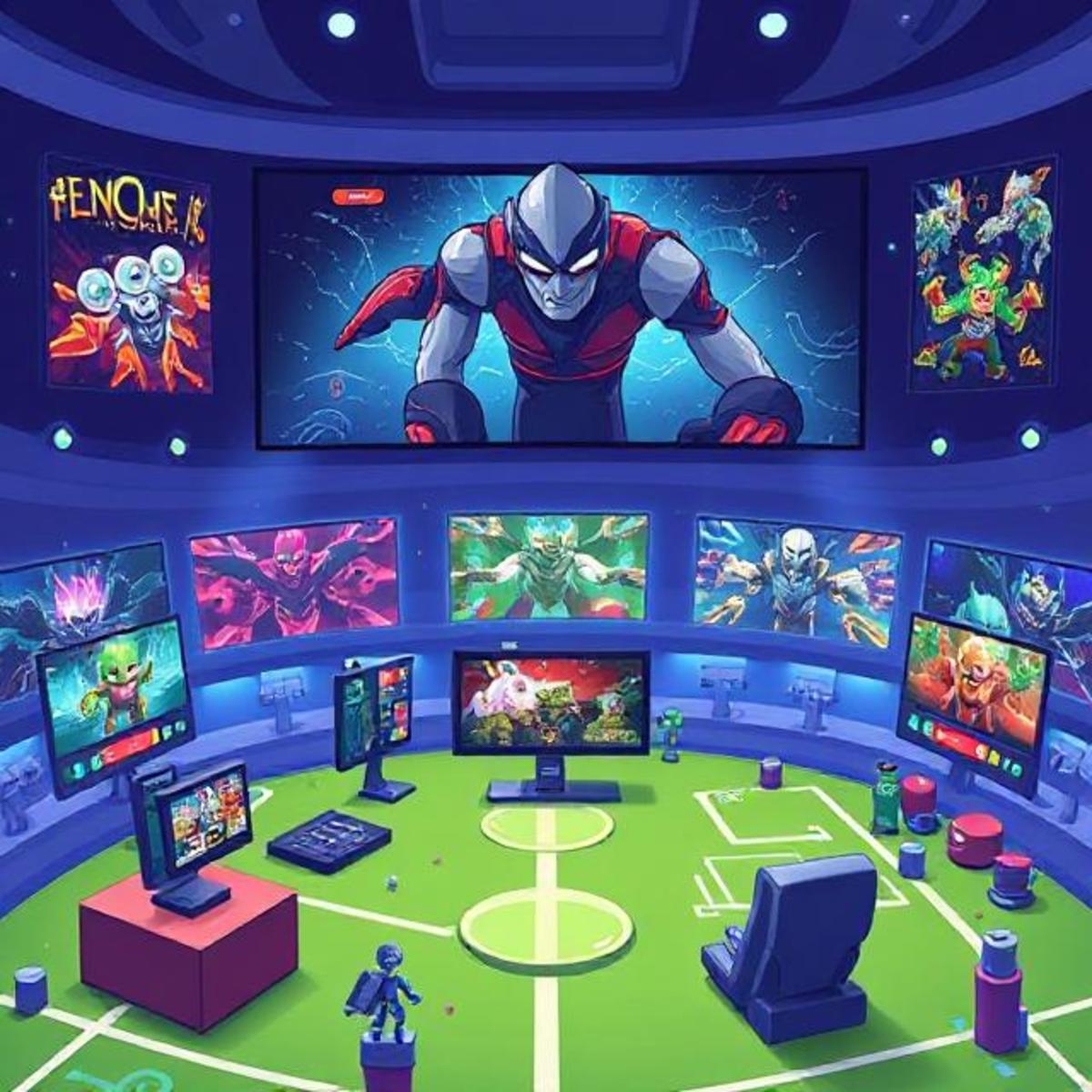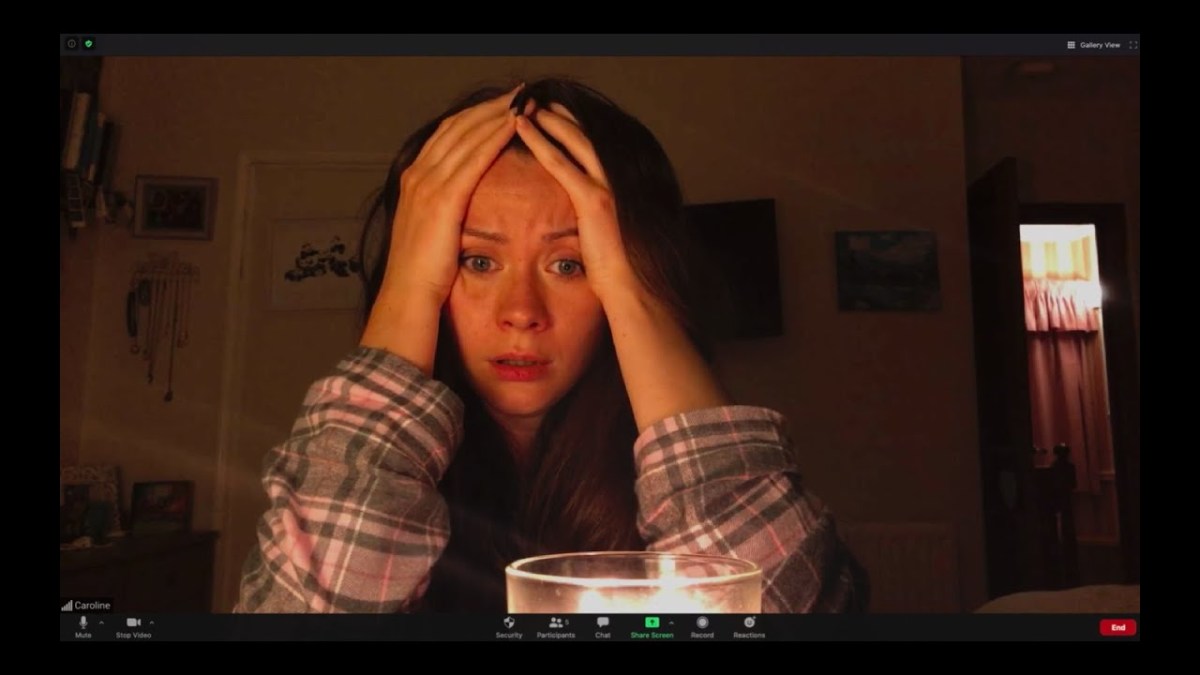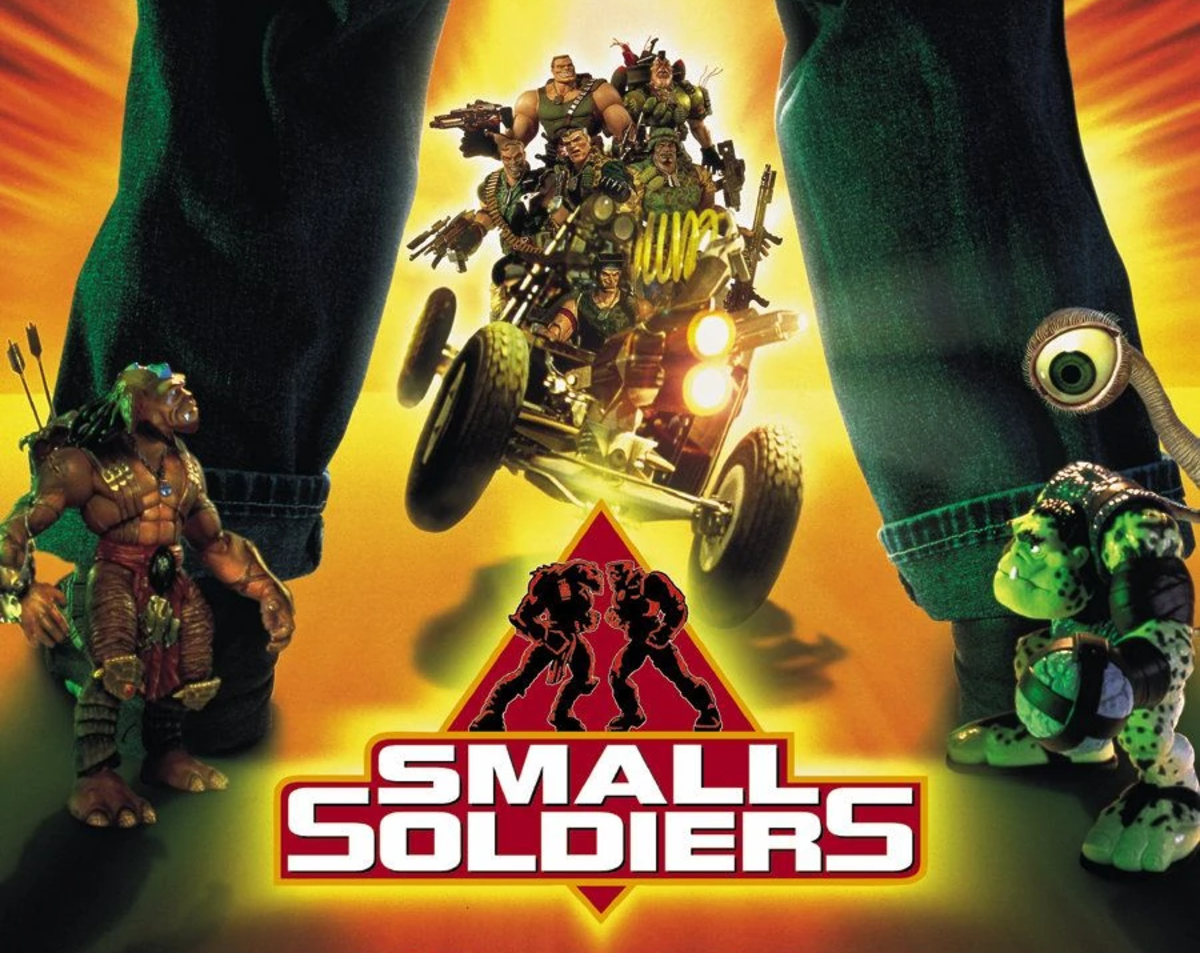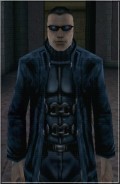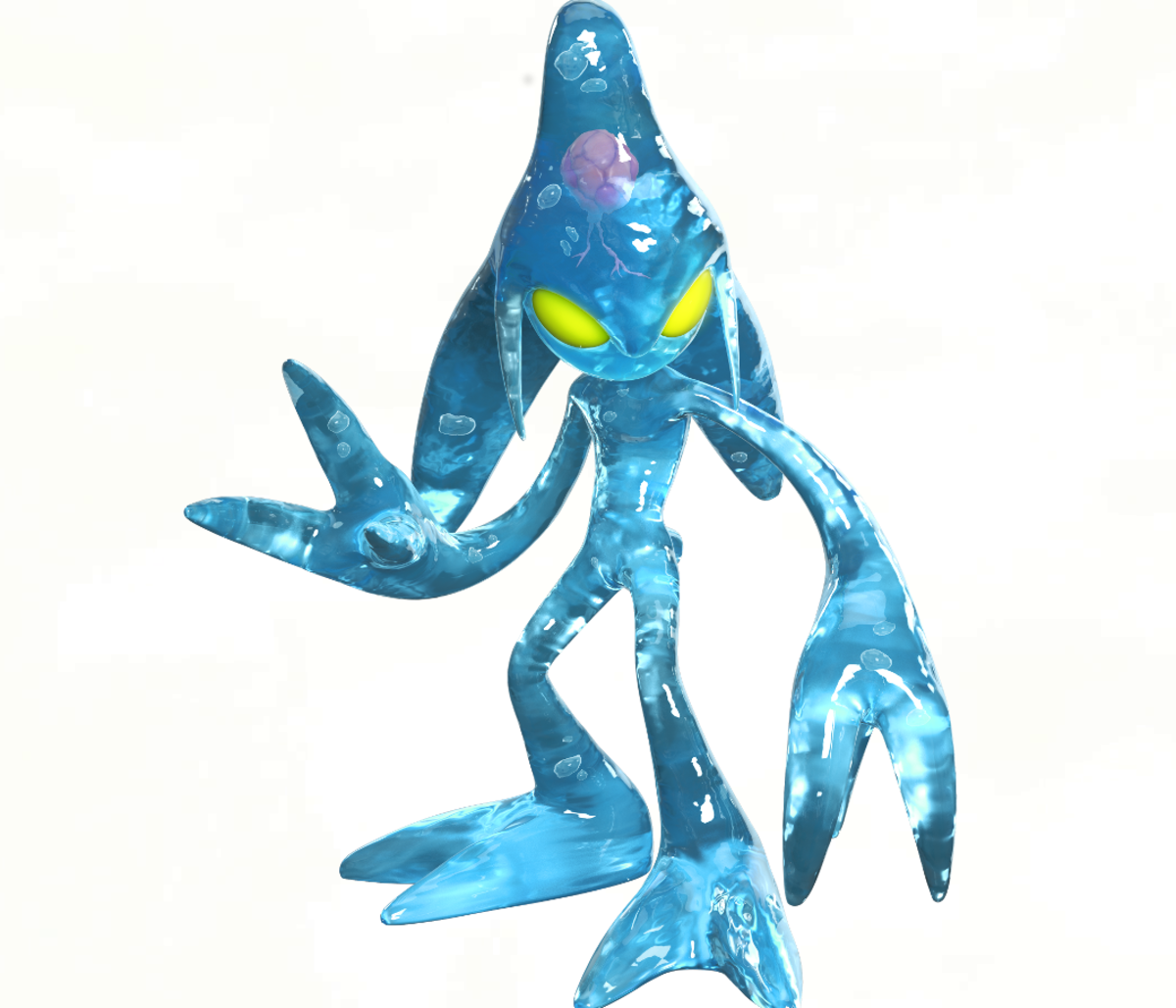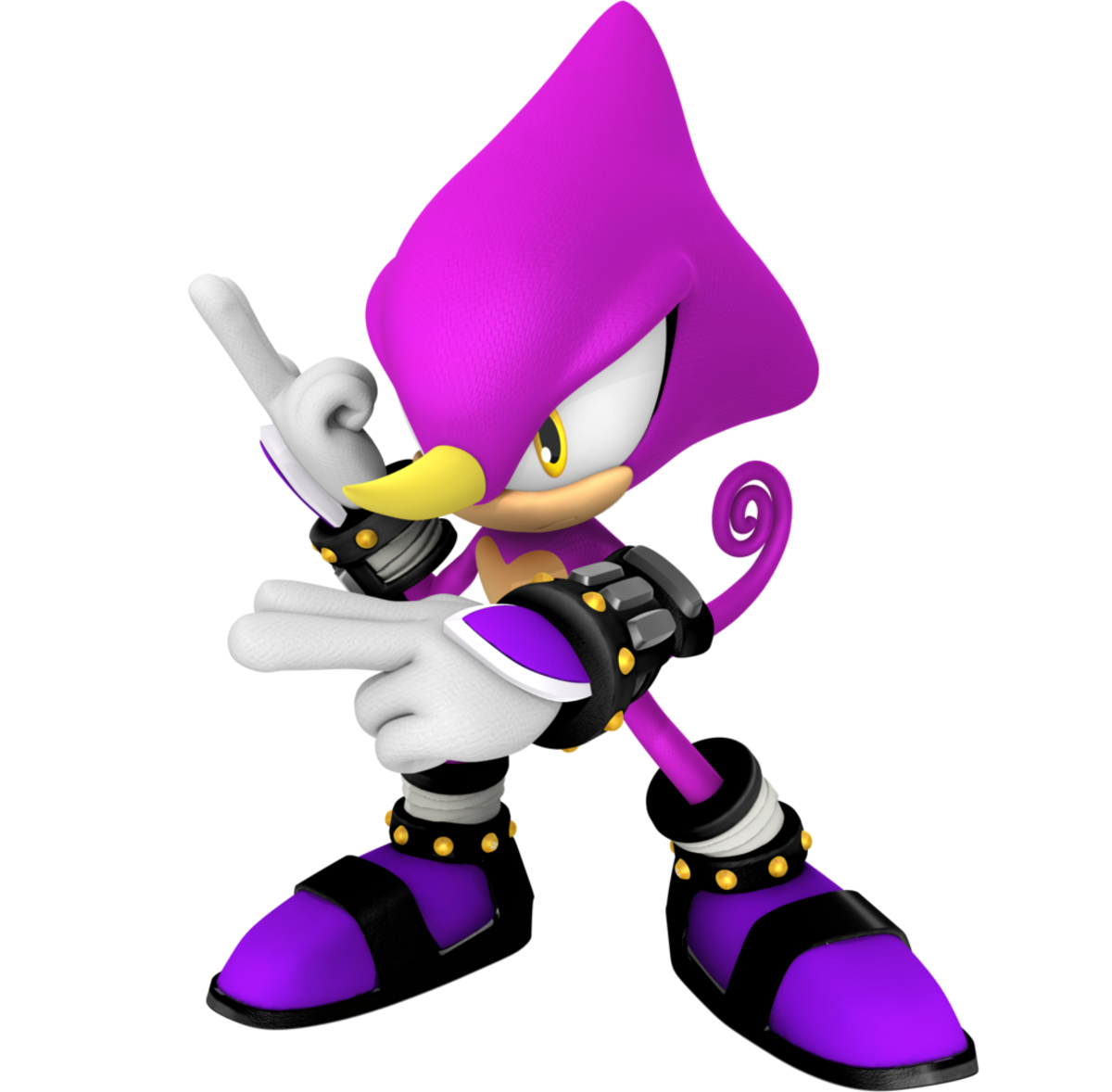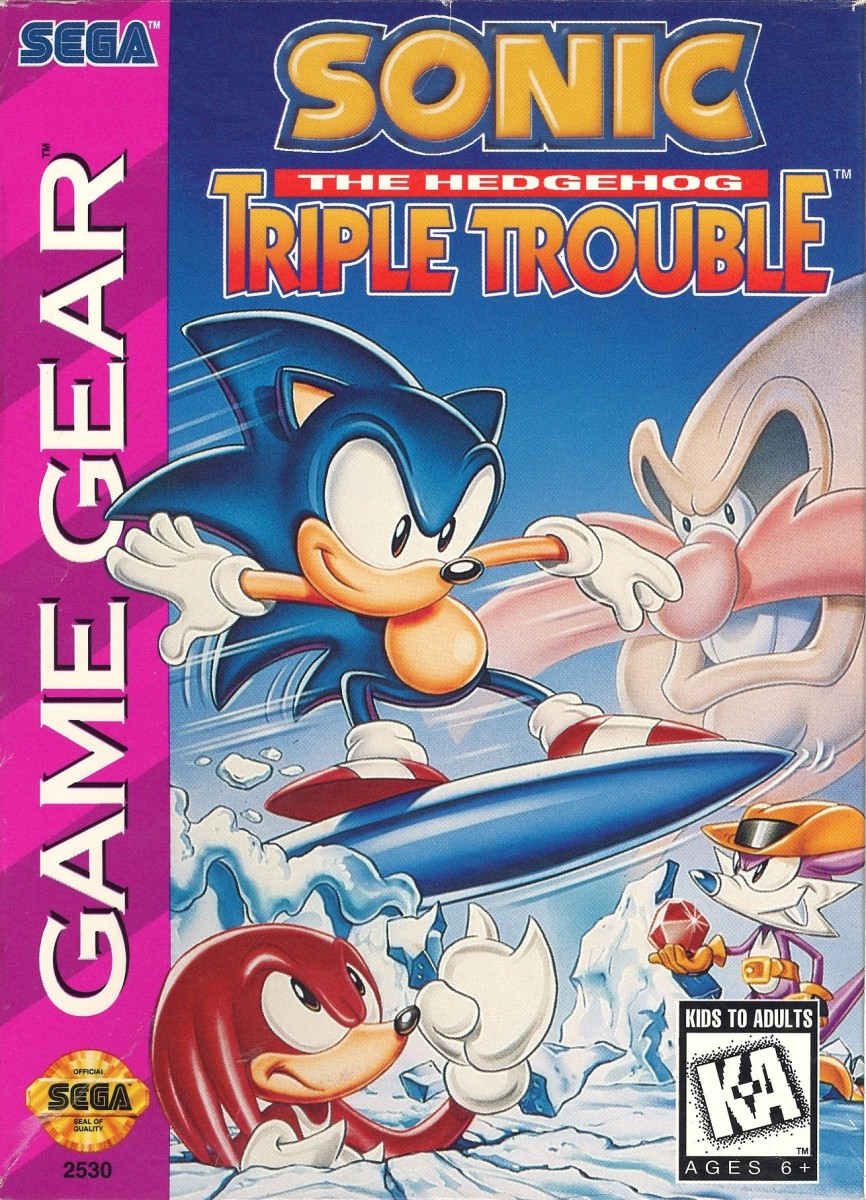Crash Bandicoot 2, Cortex Strikes Back: A Retrospective Review
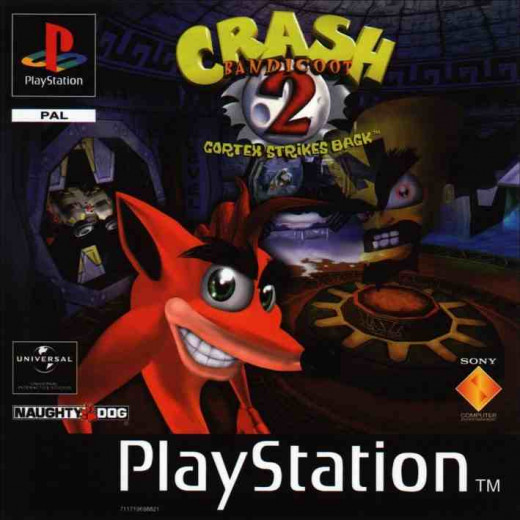
Back in the Time Twister Machine
As you may know I tend to reminisce back to a more innocent time, when platform games were king and for miles ahead we still couldn't see what the next big genre was. PC gaming was further apart from consoles than ever before, and strategy and RPGs were dominant there, but we console gamers couldn't give a Koala Kong's behind, for we were fully endorsed in some of the greatest games of my time. In this review I tend not only to give you a nostalgia trip that'll send you sky high, but also tell you what this game did and how it has affected platforming to this very day. Not only is this article filled with my personal thoughts but it's also a review that focusses heavily on the technical and more subtle things rather than the in-your-face aspects of the game everybody and their mother knows about. Anyone who has read my Spyro the Dragon: A Retrospective Review will know that this is going to go into as much detail as possible and more, so if you're looking for a quick look at this game it isn't for you. It's for those who wish to be educated, and understand why I am so pained by the various lashings of change this series has seen.
But to truly understand this game and my feelings toward it, you have to be in my head. So let's dive in there, but be sure to wear your crash hat because it's going to get ugly in there.
The 5-year old who would be King
The year was 1998, not long after Christmas the previous year I think. Crash Bandicoot 2 had been released in early December, so I would've been five years old (I never got games on release as they were £40 at the time, but quickly saw price reductions in later months), and life was so simple. Wake up, school, come home, play Super Mario 3 on the SNES, eat dinner, go to bed. And I was content with such an existence, but it wasn't until I started playing Crash Bandicoot 2: Cortex Strikes back that I was living life to my maximum potential. Or at least I thought so.
Crash Bandicoot is a character that holds a lot of appeal for me, and so does this game, because it was the first of the Naughty Dog platform trilogy that I'd ever played. I used to think when I was younger, playing Polar Panic and whatnot on the demo discs that he was a fox. I remember recalling on the opening credits, "Naughty Dog? He's not a dog, he's a fox", without realising he was in fact an anthropomorphic bandicoot with some of the most stylin' clothes I've ever seen. No joke, I loved the fingerless gloves, spat-like shoes and those deep blue shorts. If I were any slimmer, I'd probably run around with a tan grinning topless dressed like that, though I might end up getting arrested. I told you this wasn't going to be a smooth ride, in my head! However the thing that makes Crash Bandicoot one of my favourite platform characters is that he had shown me the greatest capabilities of the Playstation and the genre, and from there on I have always thought of this game when reviewing or playing another platform game. Obviously no game can't top this (though CB and Donkey Kong are head-to-head champions in my books), but those who wish to aspire to it and embrace everything it has done (and avoid the mistakes) is aces with me.
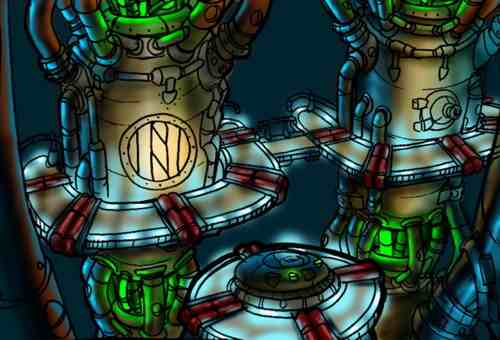
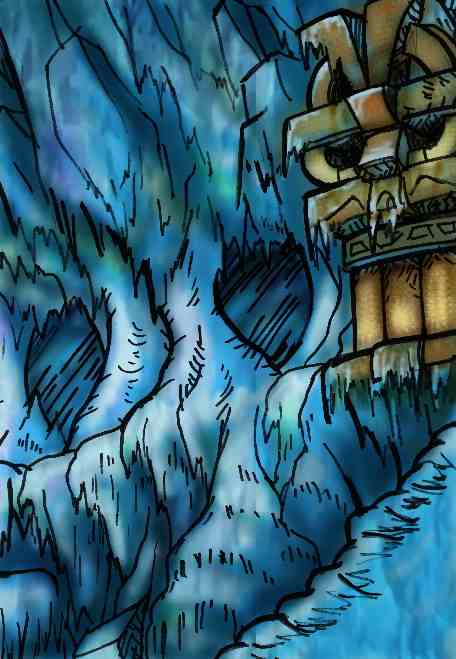
The Development of Crash Bandicoot
The original game was to focus on jungle and forest areas, but thanks to more ideas coming through, the original team of five who worked on the environments added more such as factories, castles, glaciers and cities in later games. Most of the game's concepts including the character came from Mark Cerny of Universal Interactive Studios (once of the Naughty Dog team), though Jason Rubin also helped craft the character and levels, alongside Eric Iwasaki, Charlotte Francis and Bob Rafei. Thanks to fan donations after the first game being a hit, more designs were encouraged and artwork was regularly sent into Naughty Dog's offices, some innovations such as the jetpack and chase scenes were encouraged by players rather than designers. Charles Zembillas conjured the first pictures of Coco in March 1997 due to controversy surrounding Tawna Bandicoot's image in the first game (one of the first characters in video gaming to see to the 'furries'), and she would play the role of Crash's sister.
One of the creators and programmers of the Bandicoot universe made a superior engine that could run the game, often known as G.O.O.L, which stood for Game Oriented Object Lisp. This allowed the game to increase the amount of polygons for character models, run far faster than before (as seen by the reduced loading times, one of the biggest technical advances on the PS) and increase the frame rate considerably. Most of these things could've been put to better use, but it's evident there is a new engine working under the Cortex Strikes Back hood.
The soundtrack was provided by Mark Mothersbaugh and Josh Mancell, and effects were by Universal Sound Studios (consisting of three or more people; names I couldn't find). Voice actors included Clancy Brown, Brendan O'Brien (of most CB games) and Vicki Winters.
The Bandicoot Dynasty
I often find myself saying this, but what the first game of this series did, the second refined and the third added more to the perfected formula. Crash Bandicoot originally started as a gamble and even though it's one of the most popular platform games known to man, it still wasn't all that impressive to most critics at its time. Let's not forget that the SNES/Genesis were still happily chuntering along and weren't going to give up their mantles easily, and had plenty of fight in them. Many players claimed that although it was a fancy looking game (with 128 bits you can't go wrong.... well, actually you can), the actual gameplay and mechanics were severely outdated and also badly implemented. If you thought some of the N64 library was glitchy and bug-ridden, you clearly hadn't played these games. Yet those who liked this game supported it further and the few pennies that came in via the old fashioned kickstarter of putting your money in the mail to Naughty Dog helped add some new innovations.
Let's first talk about the control, something we take for granted but is the most important aspect of the game. I needn't tell most of you one of my favourite James Rolfe quotes,
"What's the most important thing about any video game? Well how about being able to f**kin' play it?!"
The control in this game is perfect, and I've yet to see a game that can match the responsiveness of the jumps and the fluency of the movement. While the spin attack has a 'global cooldown' and makes an animalistic grunting noise if you press the square button mid-spin, everything else is just fine. Another innovation, in case the control isn't good enough for you, is the uncanny ability to save your progress on the memory card! It may not seem so awesome now, but CB was a big game and you'd have a lot to do after defeating the final boss. Few games at the time utilised the memory card, most of which stuck with a password system even 'til the very end of the console. It wasn't until the PS2 when developers said to themselves "we really need to make use of this", so saving the game was a life-saver, and you rarely saw it on consoles at the time. Even PC tended to struggle storing your progress, and some games were so big there wasn't enough room on the disc to hold a story (so it came in books in the cardboard big box).
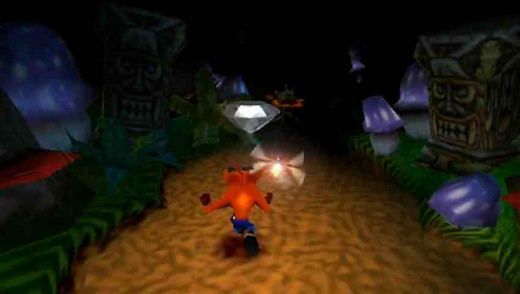
Crash Bandicoot 2: Cortex Strikes Back was also the first game to make popular alternate challenges without having to play the game on a harder setting. While Donkey Kong 64 did such a thing with blueprints, tokens, film reels and golden bananas, it wasn't entirely a catch due to the overwhelming amount of things you had to do. Some people like that, myself included, so you're never left scratching your head clueless, but it can confuse others. In CSB, that wasn't the case - there were only two important collectables and a single resource that would grant you extra lives. There was first the crystal, which had to be collected 3 quarters through the level, before reaching the exit. Destroying all the crates in a level (each offering wumpa fruit or a chance at an extra life) would grant a diamond, though I tend to call them silver gems 'cause that's what they are. You could also find alternate gems by discovering the hidden warp room, clearing harder and hidden challenges such as going up a staircase of Nitro crates or falling down a particular pitfall, so there was plenty of obscurity in a game that is often easy by just going for the crystal.
Then there's the lobby and even though this isn't original as such, it's still one of the best ones I've ever seen. It's not a shoddy little map screen like Donkey Kong Country (though that had an awesome theme), but instead you had a circular room with five warp rooms, taking you to each of the levels. You also had a Save/Load screen and a device which took you up and down provided you had beaten the boss above you. In my Top 9 Reasons why I hate Fable 3 article I stated that the sanctuary was isolated and claustrophobic but here it doesn't feel like that in the slightest, even though it's cramped. Maybe it's just being familiar with it, I don't know. There's also a funny Easter egg where if you jump on the polar bear in the second lobby enough times you'd get some extra lives! Pretty neat trick, and saves you from farming the first level!
Not only this but the game can be played both horizontally and vertically, allowing for a lot more variation on other platform games at its time. Sometimes I can't do with the openness of Banjo-Kazooie and like a more linear experience, and at other times I'm in the mood for that. I guess it's down to which you've played first and how much time you've spent with it, but either way, it beats walking in the same direction all the time, right?
In all honesty, a lot of this game's features owe thanks to Donkey Kong Country, for all kinds of vehicles are used here. But as said before while one game invented it, the next improved upon it. CSB also provides space travel with a jet pack, polar bear riding and some kind of water-skateboard device for, you guessed it, water! So it's quite evident that this game has learnt all the lessons of others and more.
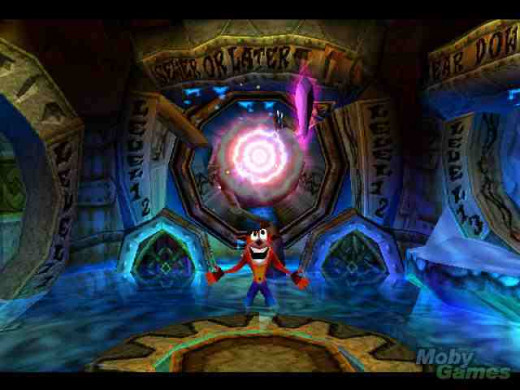
Cortex Strikes Back
The story of this game takes place literally seconds after the first of the trilogy, where Doctor Neo Cortex has found a new power source for another Cortex Vortex. This device will allow him to destroy the world, but he plans on using it for good. So who's the antagonist? You'll have to see for yourself. After some manical laughing, the cutscene transitions to Crash Bandicoot with his sister who requires some batteries for her laptop. So the quest for two kinds of power source begins, and so does your tutorial.
Adjusting to the game is fairly easy and the very first stage (the only one you can't revisit without making a new save) allows you to get the hang of the controls and gameplay. The enemies you face give little to no resistance, you'll find some lives and wumpa and the platforming segments aren't too tough. But as soon as you step on an ancient teleporting device, you're under the watchful gaze of Doctor Neo Cortex, claiming he needs 25 crystals to power his machine in order to stop an evil force....
While Cortex's motives are obvious, you still have to get the crystals anyway. Well actually, in a story sense you don't. Surely you could just fight Cortex's minions such as Ripper Roo, Tiny Tiger, the Komodo Bros. and N. Gin before wading up to a powerless Neo Cortex. I mean if you don't hand in the crystals, surely you'd be doing yourself a favour. But Crash is not very bright even though his sister manages to cut into the comm system and tell you the Doctor is up to no good. Your adventure begins, and should you be collecting gems, another adventure will follow in conjunction.
Your main gameplay objective is to collect the 25 power crystals in the game, divided across five lobbies. Each lobby has five levels and a single crystal can be located within the weird swirly-static doors, all having their own theme and setting. The crystals are the easiest part of this game, and because of that, it's fun for all ages but it's compulsory in order to get to the next lobby to face the boss before that. If you collect a crystal and suddenly die, you don't lose that gorgeous violet and slender gem, or any gems you collect for that matter (a mistake I made on one of the Skull Routes), so your next objective then is to reach the end of the level and claim your prize. When you're not doing that, you should be working for gems, though these aren't all that important and should only be pursued if you've nothing better to do or you want the alternate ending.
Now I know everybody loves an alternate ending but to achieve it, this will require more time and effort than achieving the perfect ending of Mass Effect 2, and far more save reloads (now that part is hard to imagine). There are 42 gems, some of which are different colours and grant bonus stages and the secret lobby. Every level has at least one gem and these are the easiest, for they require you to simply destroy all crates on the level, including nitro, TNT and the wooden bouncy ones. Steel crates cannot be destroyed, so they don't count. Some of these crates will be hidden in a "skull route", an extra hard part of the level which has crates throughout it and an extra gem at the end. Most of them require a coloured gem so be sure to find all the obscure places in the game to catch them! And every so often when you get gems (2 at the minimum), you exchange dialogue with Doctor Nitrous Brio (N. Brio, a take on the word "embryo"), Cortex's rival in school and even to this day. I shan't spoil the ending for those who want to give this a shot, but let me tell you to be prepared for disappointment.
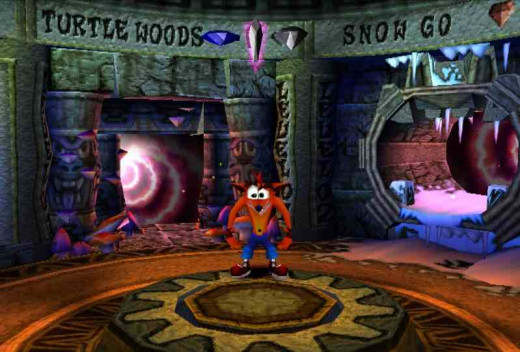
There are multiple crates in the game, the thing you'll be looking at the most. Usually they're tan with something like a question mark on them, an arrow pointing upwards, several lines on them or nothing at all. The question marked crates (very similar to Super Mario, only the contents here really are random) can contain a single "wumpa" fruit, multiple fruit or an extra life. The ones with a nothing on them tend to have either a single fruit or multiple, but never a life. The ones with arrows are bouncy and don't contain anything, so be sure to destroy those after you've reached the place they take you. The ones with thick black lines on them can be jumped on 10 times, awarding a single wumpa fruit each. Be careful though, because if you jump on them once, walk away and come back again they'll be destroyed in one bounce! Then there's others like the Aku-Aku crates; this voodoo mask is your guardian angel and a health meter similar to Spyro the Dragon's companion, Sparx the Dragonfly. He has three health modes:
- Multi-coloured feathers, meaning you can take another hit. The next time you do get hit it's death.
- Golden feathers, meaning you can take two more hits. The one after that means death.
- Glowing, bongos are bursting your ear drums and Aku-Aku is sitting on your face: INVINCIBLE! Run like Hell and don't stop until the music does!
Then there's also the tan crates with purple metal plating around them. Many seem to think these were introduced in CB3: Warped but were in fact here (albeit uncommon). The reason why they weren't in the first game was because the belly-flop ability is bound to the circle button, and Crash had a spin attack bound to that one too. It was rumoured that Crash would get the belly-flop in the first game at the last minute but due to the game already being distributed and little testing, it wasn't added. But as I say, a rumour circulated on fan boards and mishearing.
There's three more crates, two of which are your worst enemy: TNT and Nitro. TNT crates are the red ones that - upon being bounced - countdown before exploding in a small radius. They'll also destroy any breakable crates (save for the armour plated ones) in the vicinity so be sure not to waste too much wumpa by killing them! If a crate is destroyed by TNT or Nitro, it still counts as you destroying it, therefore you can get the gem at the end. Nitro is the same but green, and will explode instantly upon touch. To destroy Nitro without losing any health you can spin attack some enemies into it, or wait until the end where you'll find a green steel crate with an explanation mark on it, which will destroy all nitro on the map upon being spin-attacked/belly flopped. Finally grey steel crates are unbreakable, making for good platforms, obstacles, and when they're on top of a bouncing crate, instant deaths by crushing. The grey crates with the exclamation mark on them cause other crates to appear in the blank cubic outlines. If it's nitro that spawns, don't worry, because when you find the green crate at the end, you destroy the deadly nitro. If you hadn't spawned it, you wouldn't have got the gem at the end. It's complicated, I know.
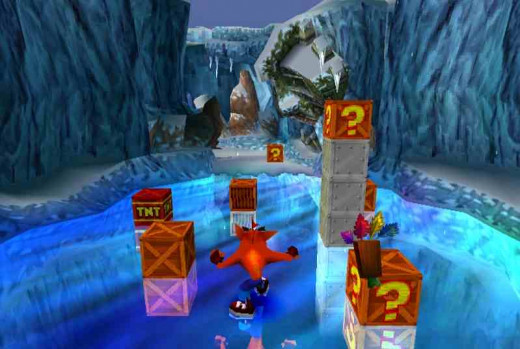
I'm surprised we've come this far without discussing the purpose of wumpa fruit! Wumpa is basically a fruit native to N. Sanity Isles (located South-West of Australia) and is suspiciously comparable to an apple. These things don't do much though for every 100 you find you receive an extra life in the form of a cartoonish Crash Bandicoot head. Unlike Rayman if you die you get to keep all your Wumpa, and still find the same amount from any crates you had once smashed (which are restored upon death in the environment, provided they're in between checkpoints). However if you find a life in a crate but die, the life will not respawn in that crate. This hardly matters because - again, unlike Rayman - once you've completed a level you can always find the life in the same crate upon entering the level again.
There's also bonus stages which help with your wumpa, crate and life count, found by stepping on a pad which levitates to a blocked off area of the level. These are always horizontal and should you die in them, you won't lose a life. But anything you found in there will be reset and you have to start the bonus course from the beginning. In Crash Bandicoot it was very important you visited these bonus areas (requiring 3 'Tawna Tokens' in the environment), because at the end there would be a password. If you had a memory card you'd need these bonus areas to save your progress, something I absolutely hate even to this day. Thankfully such garbage isn't in future Crash Bandicoot games, and bonus rounds are just that, and not essential ways of life.
The enemies you'll face I'll admit are mostly generic, involving failed experiments by Doctor Cortex (when he was making cyborg animals), his army of Gary Larsons, sorry, scientists in all kinds of uniforms and some untainted beasts involving seals, lizards and log-throwing gorillas. But I can't complain nor can I laugh because they've done their jobs very well over the years, and each enemy has a different way of being taken down. Some can't be jumped on because they have sawblades on their backs; some can't be spin attacked due to spiky sides; some need to be slid under because their legs are vulnerable and some require you to jump on them and belly flop them. So there you can see there is an element of cleverness, however obscure.
The bosses too aren't much new but like with the critters in the levels before them, you will find yourself in a pickle. In this game nothing is as simple as it seems - with Ripper Roo you have to stay away from him as long as possible before he becomes vulnerable; Tiny Tiger is one of the toughest bosses in all of platforming and Akatosh save you if you're hopeless at jumping to a particular spot in two seconds. Oh, and don't get me started on N. Gin.
I HATE N. GIN.
The final fight with Neo Cortex is almost impossible if you haven't gotten used to the jetpack controls, but he doesn't give you much trouble if you've mastered them in the little experience you get. Only two levels in the fifth lobby utilise the rocket pack, and let me tell you the controls for these are dire and go unexplained in-game. This caused me so much frustration in my childhood, and countless hours have been lost to rocking the sticks up and down, back and fourth, pressing the button to go back and forward like a mentally ill potato. But still, the ending pays off and I think that's what counts when such frustration arrives.
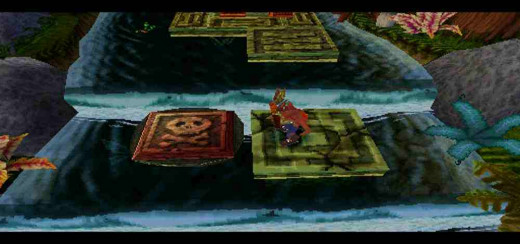
Visuals and Soundtrack
It's time now to be covering the visuals and soundtrack, and I have to say for their time they're rather impressive. In saying that, many 64-bit games such as Super Mario, Donkey Kong 64 and the Legend of Zelda had far more memorable visuals than this game, though CB was one of the most graphically presentable games for this console. It didn't have much competition save for Spyro the Dragon, Klonoa: Door to Phantomile and Tombi!. The new engine also helped with water textures and other flat surfaces, which gives the lakes you'll find yourself near (though hopefully not in) much more natural than before were the animations were on a constant loop and rather slow. The different zones are all well designed, each having distinct differences without turning into the Nightmare before Christmas, AKA Gex: Deep Cover Gecko, with its Christmas Lands and Halloween Lands and so fourth. It manages to come up with new things like making space seem so far out and yet so close; it makes icy worlds without not being too repetitive; it brings back the jungles of old with some new twists including darkness and weather changes. Such minor things can radically change my opinions on the game.
The soundtrack too is one of the best I've ever heard, and made it to my Greasy Gamer show's "Top 9 Soundtracks on the Playstation 1" as place number 3. Songs such as the Pack Attack / Rock It ones tug at your heartstrings, there's funky ones like the Plant Food levels; heart-pounding tracks such as the Unbearable levels, and even nostalgia-tripping ones like in Snow Go. The voices are all very well done, the most notable belonging to Doctor Neo Cortex who doesn't give the game away at all and gives very well acted dialogue whenever he speaks. He's the true villain and one of the most iconic evil scientists I've ever seen in gaming. The rest are only second best; like comparing water and wine.
Conclusion
Despite this article being filled with over 4,000 words, multiple paragraphs, enough images to feed a horse and more knowledge than the servers of Wikipedia can handle, I still feel as though there's so much more to talk about, and so much left to be desired. Crash Bandicoot 2: Cortex Strikes Back is one of the most influencial platform games in the genre, and every CB title past this one owes everything it has to this one, no matter how much they try to mimic Warped. There's one final question that remains, one that has puzzled this cult following for many, many years:
If Naughty Dog still had control of this series, and made every single Crash Bandicoot game with the same formula as Cortex Strikes Back or Warped.... would this series be any better than what we have now?
It's hard to say 'no', but after seeing how desperately hard the Game Boy Advance games tried to do so, and how Wrath of Cortex also attempted this, I have to say that the changes that have been made, no matter how appalling or dire or upsetting or offensive, they are for the better. Because when we look back at this series in Naughty Dog's control we can remember how great it was and how lucky we are to replay these old titles. And no matter how much we get annoyed by the constant pulverising of the franchises we love today, we can still appreciate the old ones, and isolate ourselves from them for minutes, hours or days.
So even though Cortex Strikes Back is one of my favourite PS1 games, or one of my all-time favourites, I'm glad it's not being re-released every two years to make a quick buck, or to bring disappointment and shame upon its origins. After all, we've already got Ratchet and Clank to do that for us.
Until the next time, I wish you all a pleasant day, and I thank you for reading through my review. It's a pleasure to educate, and even more so to entertain!

